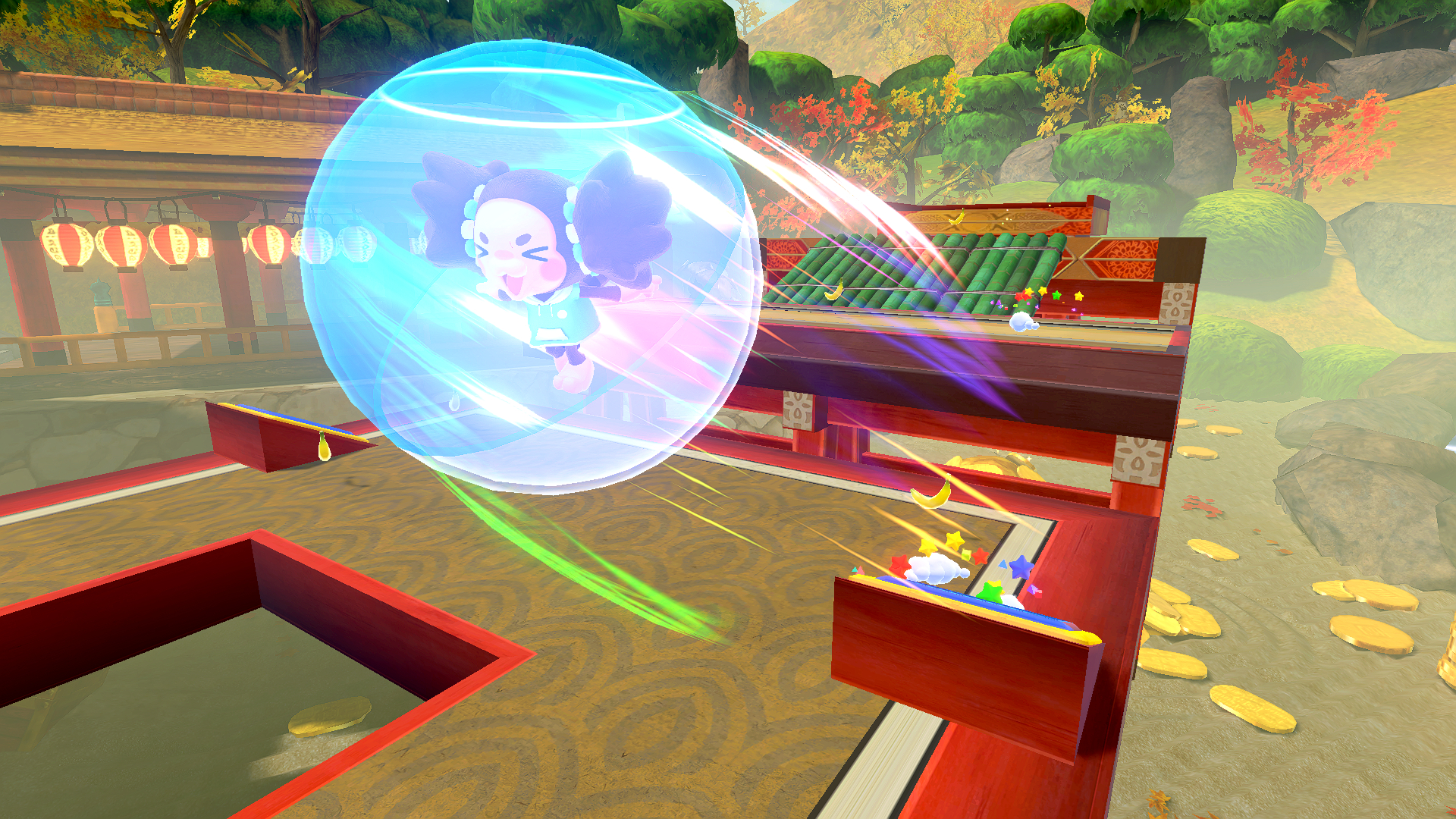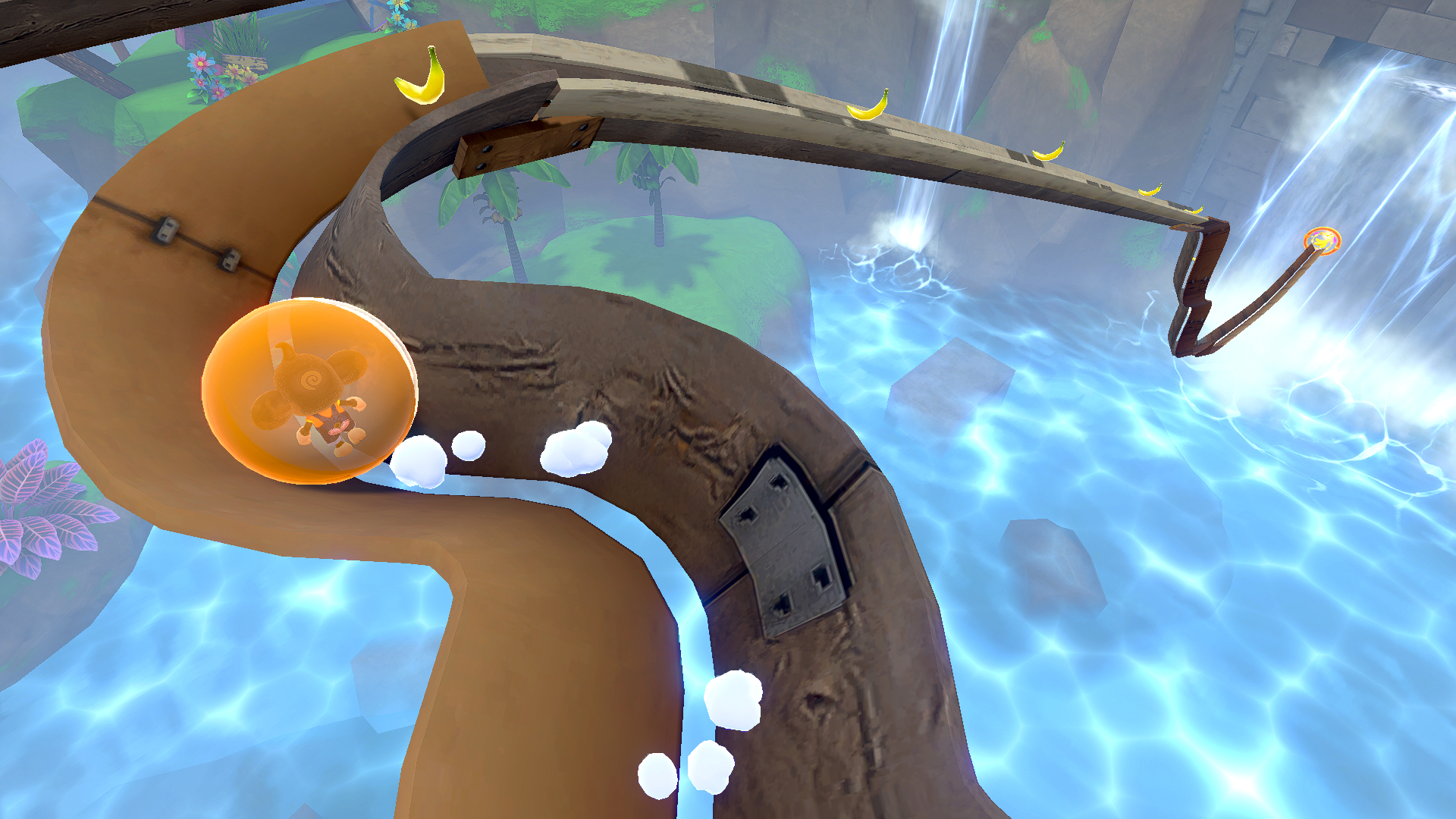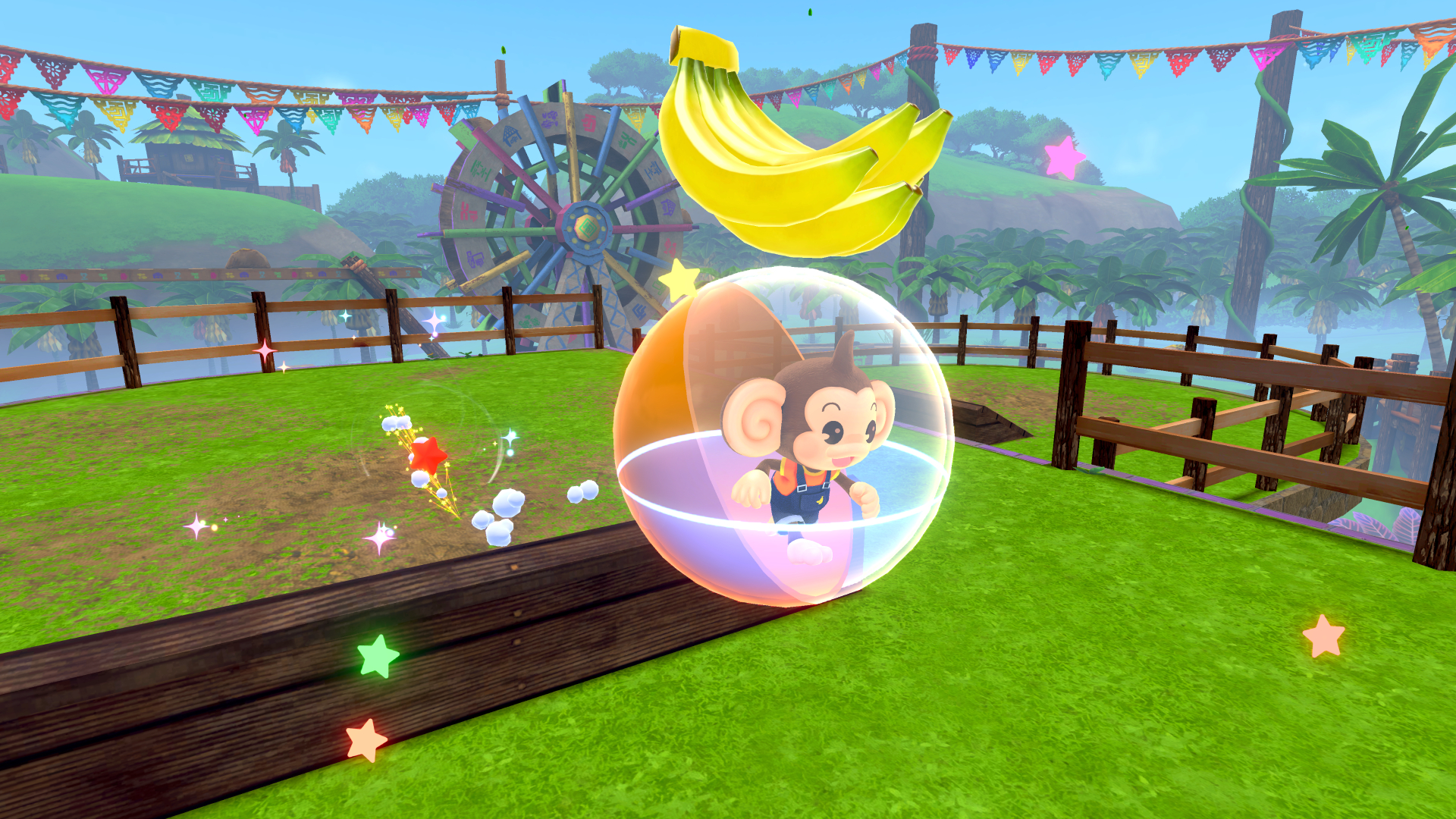TechRadar Verdict
Super Monkey Ball is back, with the best series entry since the original thanks to hundreds of fun levels, new mechanics, and a surprising amount of challenge even for series veterans.
Pros
- +
Joyous, much-improved physics
- +
Spin Dash introduces an interesting risk-reward dynamic
- +
200 levels to master
- +
Lots of replayability through difficult challenges
Cons
- -
The occasional dud stage
- -
Multiplayer, while fun, is limited
Why you can trust TechRadar
Platform reviewed: Nintendo Switch
Available on: Nintendo Switch
Release date: June 25, 2024
The Super Monkey Ball series has had its share of ups and downs since rolling onto the scene 20 years ago. For many fans, the physics-based platformer series from Sega has never quite reached the heights it achieved with its GameCube originals and various sequels during this early golden-age era, succumbing to gimmicks and lackluster level design in later installments.
There’s a simple appeal to rolling a monkey in a ball around some levels like a hamster, but it’s hard to do well. After years in the wilderness, Super Monkey Ball Banana Rumble, developed by Ryu Ga Gotoku Studio, is exactly what the franchise needed.
Ignoring an HD remaster of Banana Blitz in 2019, it was in 2021 that the franchise finally came back on the scene with a greatest-hits selection of levels in its first new console entry to the series in almost a decade. Yet even this lacked a sense of novelty by existing more as a mishmash of levels from the series’ earliest titles. Banana Rumble is a grand return to form, a Nintendo Switch exclusive promising 200 all-new levels, customization, online competitive and co-operative modes, and more, to bring us what is perhaps the best Super Monkey Ball game since the original.
Monkeying around

For those unaware, the concept of Super Monkey Ball is simple: you’re a monkey in a ball, and your goal is to roll into the goal at the end of each stage within the time limit. The twist? Rather than controlling the monkey, you tilt the stage itself. In this entry a minor story has been concocted about our familiar simians living on Juicy Island when a new monkey named Palette joins this cast of familiar faces, recruiting them to help her find her papa. However, this is more a framing excuse to travel to different themed locations to provide a varied backdrop for the levels.
Especially for a series that has struggled to move beyond its nostalgic peak, it can be difficult for a new entry to step beyond that legacy. Banana Rumble throws enough variety while being both welcoming to newcomers and challenging to even the most ardent of fans and speedrunners that I was bowled away. Retaining the simplicity of its core concept, the only additional mechanic layered upon those initial foundations is a Spin Dash. Hold the B button to charge this in order to boost at high speeds in one direction, with a brief cooldown before the mechanic can be used again.
Many of the 100 levels across 10 varied worlds - ranging everywhere from a tropical jungle to a futuristic space concert - that exist in the base adventure mode will feel relatively mundane for experienced players. However, this will change upon reaching the final world, and 100 additional extra stage (EX) challenge levels revisiting these themed worlds with harder variations will cause even veterans to break a sweat.
In this configuration not only is the Spin Dash a natural complement to the fundamentals that remain satisfying all these years later, but it provides an additional layer of optional challenge on even the simplest of levels for those willing to take up the mantle.
Sign up for breaking news, reviews, opinion, top tech deals, and more.

In many cases, the move opens the door to numerous solutions of varying difficulties at almost every stage. You could take the intended path, or you could use a boost to skip sections and reach the goal faster. Such considerations are even baked into the game design, with unique challenges for every level to collect a certain number of bananas, a special Golden Banana, or complete a level in the fastest times. Many of these require risky uses of the boost in order to reach awkwardly-placed bananas or achieve strict goal times only possible by sending a Hail Mary towards the goal.
If you are struggling, however, the game is here to support you. A neat helper function will show a ghost and recommended route to complete the level if you’re stuck. You won’t score points for the level, but you can always go back with your new skills and do it again, ensuring newcomers aren’t left behind.
With only a few duds in level design and encouragement for diehards and speedrunners to tear the game apart, there’s never a dull moment, at times reaching heights rarely seen for the franchise since it first burst onto the scene. It’s also possible to compete on every level and world in co-op either locally or online, although once you enable collisions between players and notice the looming leaderboard scoring your bananas and completion times, dark thoughts of throwing your friend into the abyss for victory will almost inevitably cross your mind.
Indeed, between the ability to spin around with friends and the challenge on offer from a mind-boggling amount of levels with rarely a miss in sight, the Adventure is a near-perfect distillation of the franchise’s core appeal. That being said, those with a heart for the franchise’s beloved minigames may be somewhat disappointed. There's no Monkey Tennis here.
Monkey Balls of Fury

One of the key appeals of this new game in the series is the 16-player online multiplayer modes, with five Battle modes for players to compete in against a range of real and CPU opponents. You can participate in a simple race to the goal, collect the most bananas in Banana Hunt, take part in Mario Kart-style free-for-all battles avoiding the bomb in Ba-Boom, collect the most goals in teams in Goal Rush, or destroy robots in Robot Smash.
While there isn’t really a bad mode in any of these, and it runs with surprising stability even with the maximum number of players when online (it does drop from a buttery-smooth 60fps in handheld or docked mode to 30fps, but never drops a frame from this point), there’s a disappointing lack of variety among them. Even ignoring the lack of stages in each mode ranging from a maximum of five in Race to a disappointing two in most others, what made franchise favorites like Monkey Target or Billiards appealing is how they retained the titular monkeys while switching up the gameplay for something that felt far removed from the single-player adventure.
Even with a competitive edge and more than a few laughs when playing with other people, these multiplayer modes soon grow stale because they don’t offer enough of a change from the rest of the game. Whereas those aforementioned modes would be something I could return to time and time again, I can imagine after a few sessions with these modes they’ll stand mostly ignored after a few weeks.
It’s a testament to the quality of this new installment in the Monkey Ball series that a lack of varied multiplayer stands as my only real disappointment with my time playing Banana Rumble. With a strong and beefy adventure mode whose Time Trial Mode competing on global leaderboards for best times will leave you with hours of grinding in order to be the best, the game soars in a way the franchise has rarely been able to in recent years.
After many years, Monkey Ball is truly back, and hopefully this time it’s for good. If you’re a fan of reaction-testing puzzle platforming or are just after a good time on Nintendo Switch, it’s hard to fault this grand return.
Accessibility
Accessibility features are minimal, though the game does offer thorough options to adjust cutscene subtitles, whether you use accelerometer, camera controls, player movement, and more. That being said, with such busy level design and so much going on at once, colorblind modes to make it easier to follow for those who need it would certainly be a welcome inclusion.
Should you play Super Monkey Ball Banana Rumble?

Play it if...
You love a challenge
Once you get to harder levels or going for 100% you will be left scratching your head in all the best ways. Pure skill but never frustrating, it’s your reactions between you and success.
You’re here for the chaos
Although lacking in variety, online with 16 players is a fun time with never a dull moment. Playing through the campaign with a friend brings the chaos of Mario platformer co-op to this game’s primate pinball.
Don't play it if...
You like to take things slow
The game requires constant precise movements and fast platforming reactions in order to win. If that’s not your scene, it may be best to look elsewhere.
How we reviewed Super Monkey Ball Banana Rumble
We put in roughly 10 hours completing the main story and many of the EX levels, while also duking it out in a few online rounds with another player and a whopping 14 AI enemies. All battle modes were tested. The game was played primarily in handheld and tabletop configuration on a Nintendo Switch OLED model, with game audio either playing from the built-in speakers or through AirPods Pro via Bluetooth.
Alicia is a freelance journalist based in Japan writing regularly for TechRadar Gaming. They’ve handled features, reviews, and more about film, TV, anime, gaming, and more with a specialty on Japan, publishing for outlets like Crunchyroll, GamesRadar, UploadVR, gamesindustry.biz, and more. After a degree studying Japanese at Durham University, they moved to Japan in 2022 where they’ve been living the high life in Tokyo ever since. When they’re not lost in the swirling metropolis they’re writing about games and their experiences in the country, providing their unique perspective from the ground.
Beyond work, they love to take in art and culture by attending exhibitions, watching movies, meeting friends for alcohol and karaoke, or going to the theater multiple times a month to watch musicals including the all-female Japanese theater troupe Takarazuka Revue. These cross-cultural experiences have intensely shaped their worldview, having just as much of an impact on their judgment of the latest games and tech as the experiences that first made them interested in moving to their new home: Kingdom Hearts, NieR, and other Japanese RPGs, as well as adorable anime girls.
